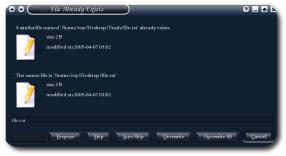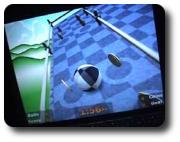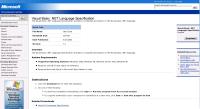Let Users Decide
 he OS X Finder overwrites directories without aggregating files in both source and the destination. For example, when a directory called
he OS X Finder overwrites directories without aggregating files in both source and the destination. For example, when a directory called /Photos is copied to /Directory/Photos, it will delete its the contents of /Directory/Photos rather than merging. That serves as a case study where the user is not sufficiently involved and, consequently, data can be lost. This behaviour must have been inherited from Mac OS 9 as Linux does not have this problem and neither does Windows.
Yesterday I spent hours driving myself mad as I realised I had lost data 4 months ago. No back-ups could resurrect that data. File dialogues must always be verbose as data loss is the most frustrating experience of all.
Developers must begin to involve users in choices that are made, as the example above suggests. “Easier-to-implement” or “automatic” are usually a bad idea. For the very same reasons, for example, image2.jpg appears after image10.jpg in file managers. That is simply a common ‘bug’ that mushroomed into a norm.






 Filed under:
Filed under: 
 indows and Mac users face long procedures of installing and recovering software whenever a computer is bought. This time-consuming process shows the strengths of comprehensive Linux distributions such as
indows and Mac users face long procedures of installing and recovering software whenever a computer is bought. This time-consuming process shows the strengths of comprehensive Linux distributions such as  PC users sometimes assemble a list of programs, each of which needs to be installed in turn. Why not use an image with all the software pre-loaded? Since hard-drive capacity is enormous, redundant bits cannot harm (with the exception of the Windows Registry). Also, one can distribute everything on several machines, without any repeated effort. If this does not illustrate the power of free Open-Source software, what does?
PC users sometimes assemble a list of programs, each of which needs to be installed in turn. Why not use an image with all the software pre-loaded? Since hard-drive capacity is enormous, redundant bits cannot harm (with the exception of the Windows Registry). Also, one can distribute everything on several machines, without any repeated effort. If this does not illustrate the power of free Open-Source software, what does?








